Exploring the Winter Deserts
Part 1: From the USA to the Kalahari Desert
Over a decade earlier, we had completed almost 5-years of living in Africa, and had had the wonderful opportunity to participate in over a dozen safari’s within 9 different sub-Sahara countries. However, Namibia had been one of those countries that we had never made it to, although plans had been made in 2011 that were subsequently cancelled for severe flooding. Now, after a dozen years of relative drought conditions there, we finally made the commitment to see this beautiful country. We planned our trip through our historic Africa planners (Go2Africa), and decided to rent a car and move from one game lodge to another that were all reserved in advance. Our intent was to experience different parts of the country and have the flexibility to explore along the way. Namibia is a safe country to travel in, and with a population of only ~2.5 million, is the 2nd least population dense country in the world!
When planning a safari with a desire to see animals, it is best to travel in the winter (dry season) as the animals will group-up near the isolated watering holes, making finding them much easier. Therefore, we planned to leave Washington, D.C. in early July (winter in the southern hemisphere) to spend two weeks traveling around Namibia. And, since we were already close-by, we tacked-on an additional week in one of our favorite places on the globe – Cape Town, South Africa – at the end of our trip.
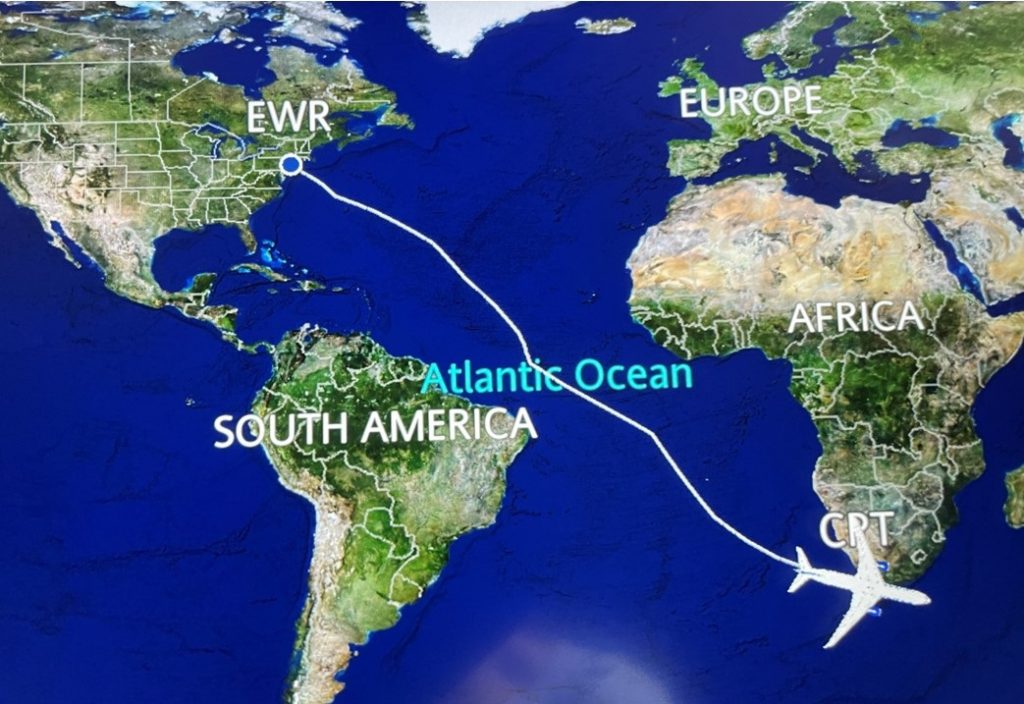
From Washington, Dulles, we took a short flight to Newark to board our 15-hour-plus flight directly to Cape Town. After a plane “cargo balancing” delay, we finally left Newark and arrived in Cape Town in the evening only 1-hour late. That night, we stayed in a near-by airport hotel, (Hotel Verde), before resuming our journey to Windhoek, Namibia with a short flight the next morning. We were met at the airport by our car-rental company, oriented to the area, and given our vehicle – “Pauline” – a 4 door pickup with a covered back to hold our luggage and 2 spare tires. With the help of GPS we headed to our first game-park lodging, having to stop along the way for a herd of baboons, a flock of Guinea fowl, and herds of sheep and goats crossing the road. Along the way, we passed Namibia’s Hero Monument build to recognize the countries historic heroes, and then passed south of the Tropic of Capricorn.

283 kilometers later we arrived at the Kalahari Anib Lodge, where we unpacked before taking a short walk on a desert trail. That afternoon, we took a guided game drive where we saw eland, the largest antelope (males can up to 2000 pounds), guinea fowl, red hartebeest, ground squirrels, and ostriches. Ostriches can lay 10-18 eggs each at one time, and they can also join their nests into a communal nesting area that can hold upwards of 60 eggs that are jointly cared for. This helps to protect against the jackals that like to scavenge their eggs. As darkness approached, we stopped to watch the sun set and enjoyed sundowner drinks and nibbles before returning to our room.
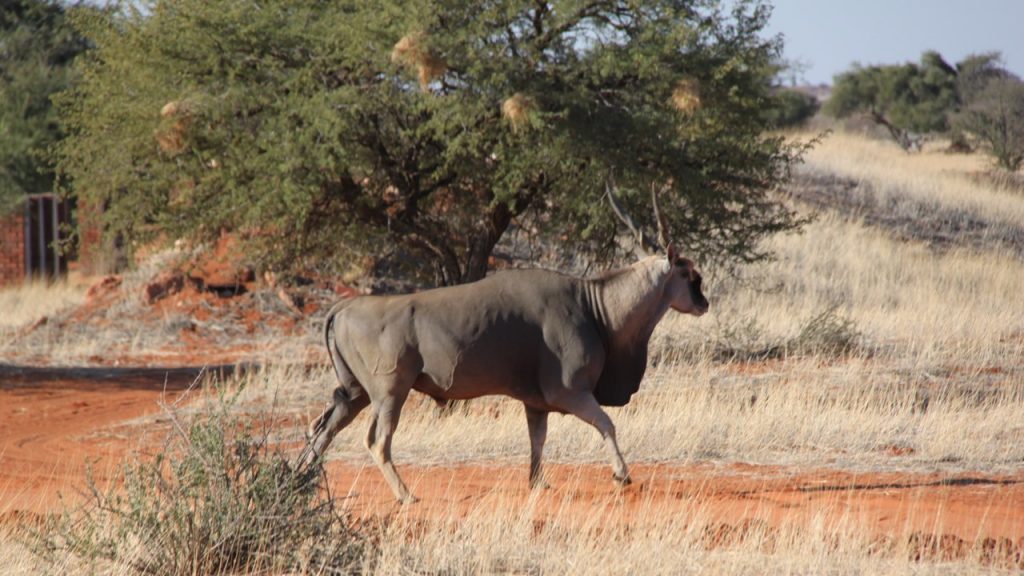
Back at the hotel we were moved to another room due to lack of hot water, and after dinner we celebrated the 4th of July with champagne around the campfire.
The next morning after breakfast, we began the 3-hour drive from the Kalahari Anib to the Zannier Hotel Sonop, on the edge of the Namib Desert in Sonop, Namibia. Along the way, we stopped to explore the Duwisib Castle – a grand medieval looking building atop the hills in the Southern Namib region. It was built in 1909 as the residence of Hans Heinrich von Wolf, a German military officer. It was built so that could withstand a siege, as was taught in Von Wolf’s military training. After the German wars in the south Africa region, Von Wolf and his American bride settled there on over 55,000 hectares. They operated the property as a stud farm for English and Australian thoroughbred horses. However, when World War I broke out in 1914, they returned to Germany where Van Wolf was killed in battle and his wife gave-up the castle. After that, it changed hands many times until the Namibian Government took ownership in 1979 and refurbished it in 1991. Today it operates as a resort and still serves as home to wild horses that descended from the Von Wolf herd.

After passing flocks of ostriches beside the road, we entered a large valley and traveled a series of dirt and gravel roads before arrival at the entry headquarters of the lodge. We were transported another few miles with our luggage to a large outcrop of boulders where the resort sits atop. It consists of 10 cabin tents with a dining area, pool, and gym – all mounted upon giant boulders with panoramic views of the surrounding pan and the Tiras mountains. After a 2-year drought, few animals remain in the area with the exception of oryx – the national animal of Namibia. That evening, we took a scenic drive with Floyd – a local renown guide that was spectacular. His knowledge of the area and animals was exceptional and we started by visiting a colony of weaver birds who make giant communal nests holding 400-600 hundred birds. These nests can become so big that they can eventually topple the tree. Small single weaver nests could also be observed. We inspected a Quiver Tree, which is a type of Aloe Vera tree with beautiful yellow flowers on the top and the bark was used by local tribes to make quivers for their arrows. All of the trees have medicinal properties. Floyd also showed us the African Moringa tree, it too is medicinal. We ended the drive at the top of the large dune where we had drinks and watched the sunset. This magic moment led to discussions of family aspirations and of life growing up in Namibia. Floyd demonstrated the iron richness of the dunes by extracting iron from the sand magnetically. Time ran away, and on the way back in the dark we encountered an oryx crossing the road. Then, it was into a golf cart for the climb to the top of the boulder pile and for an eland steak dinner before retiring for the night.

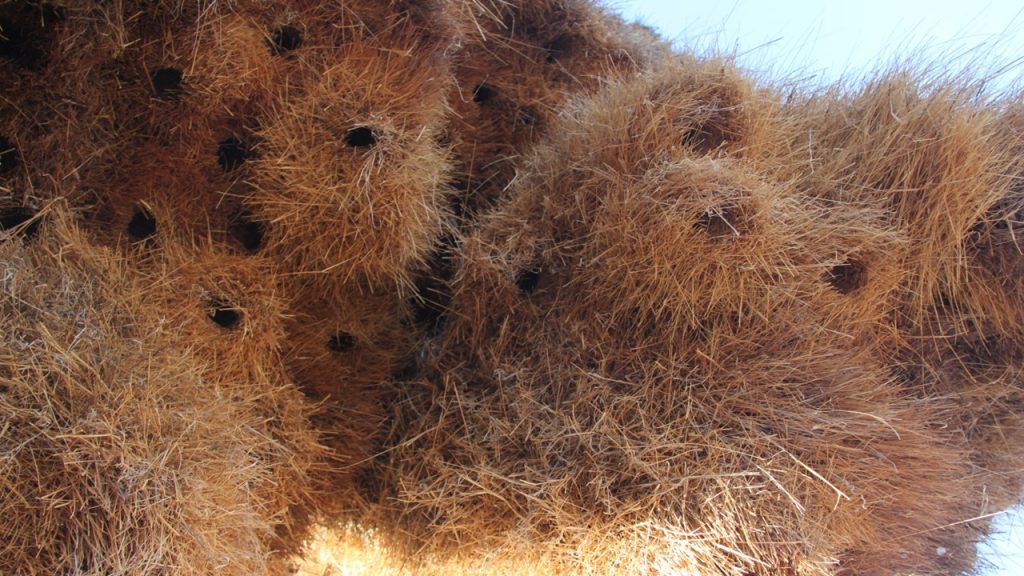
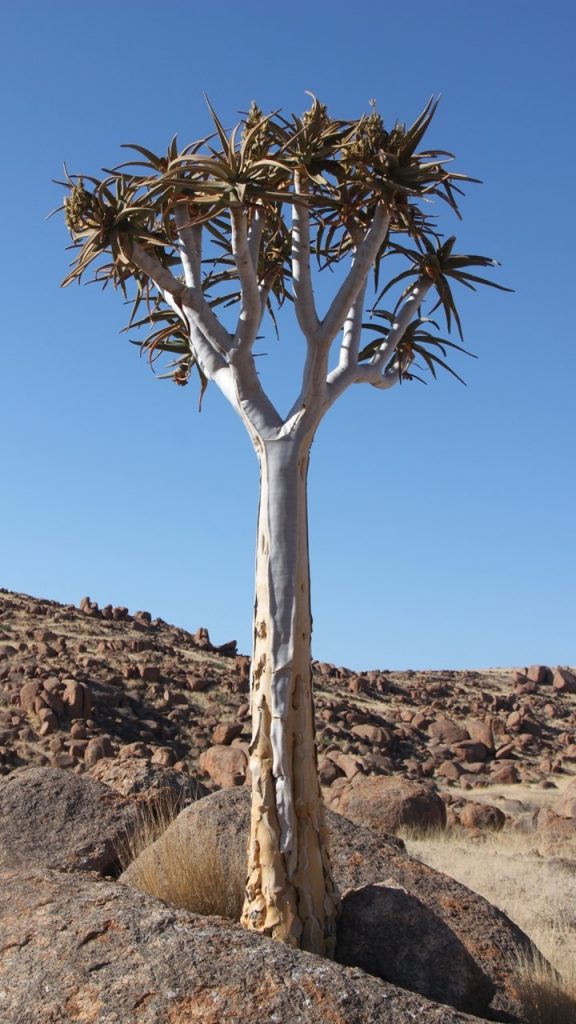

Thursday morning we watched the sunrise from our tent’s balcony before an early coffee and meeting Floyd for a 3-mile ride on electric fat tire bikes to the horse stables. There, we met Austin to go horseback riding on 2 beautiful horses – Angie and Jessica. We rode for about 2-hours towards the mountains, then to the entrance gate, and finally back to the stables, taking lots of pictures. Una then drove us back to the lodge for a late breakfast of omelet and Eggs Benedict. Then, we went to the pool for a cool, relaxing late morning. After floating around, having lunch and a bottle of champagne, we returned to our room for showers before heading to the lobby for afternoon drinks and meeting another guide, Lazarus, for a hike to the Bushman’s cave that was historically used as temporary lodging by local tribe members when they were away from their village out on a hunt. While hiking, we stopped to examine various cactuses and plants, and came upon springboks and eland grazing about. At the Bushman’s communal cave, we saw the remnants of ostrich egg shell pieces that had been fashioned into jewelry, stone implements for grinding, pottery shards, and drawing on stones and the cave walls.

We then celebrated with gin and tonics while having a conversation about cultures and family before returning to camp in time for dinner. That night we dined on pork medallions while having conversations with the day’s newly arrived guests, before heading off to bed.
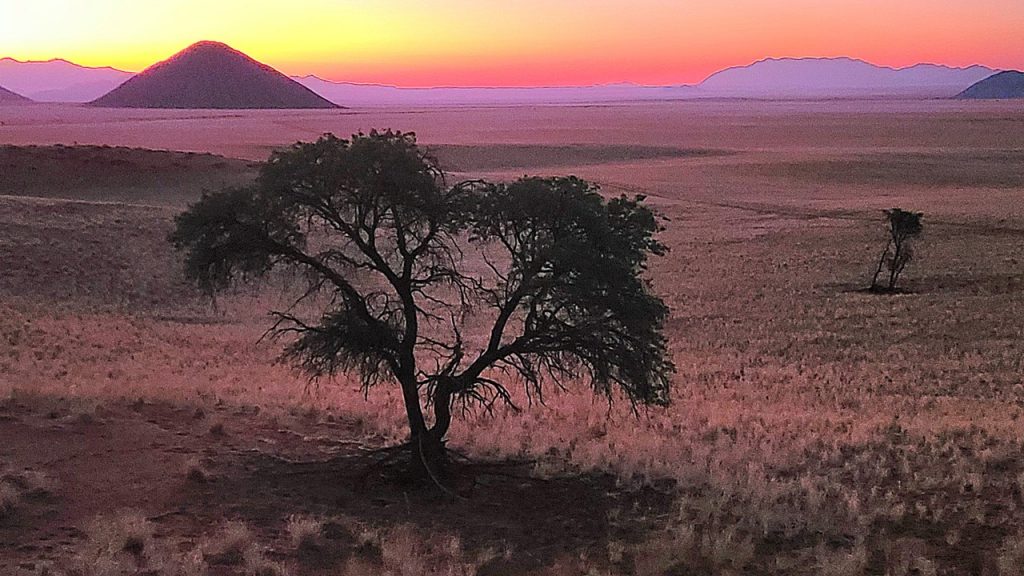
Friday morning, we were up at sunrise to take the fat tire e-bikes for a spin around Zannier Hotel Sonop 5000 hectares by ourselves. Shortly after leaving the lodge and heading towards the mountains we saw a large male oryx, then a pair of oryx, then 7 oryx, then 9 oryx, and then 3 different herds of 20-40 oryx each. We rode the bikes for 90-minutes, enjoying the peace and quiet of the area and going where we wanted. We returned in time for breakfast, after which we checked out and started our drive to the “town” of Bette to fill our vehicle with fresh diesel, and continue our journey.

